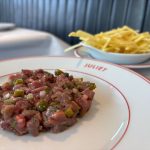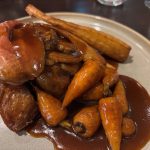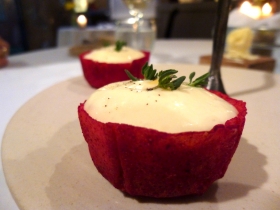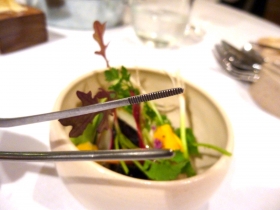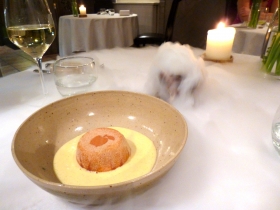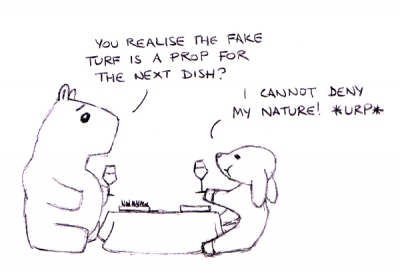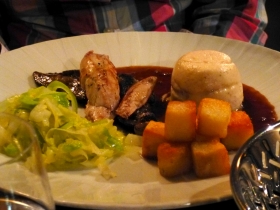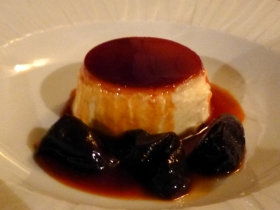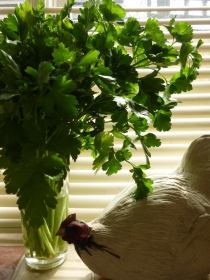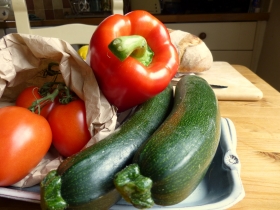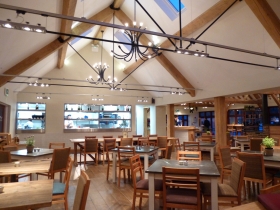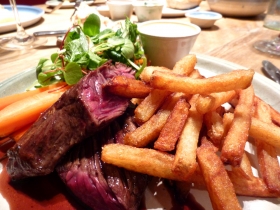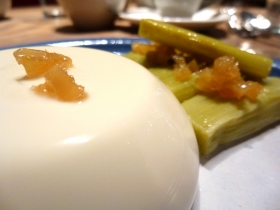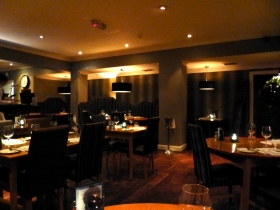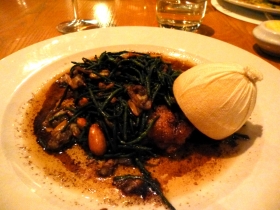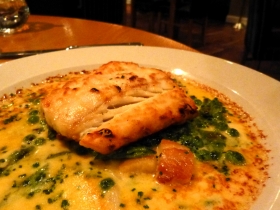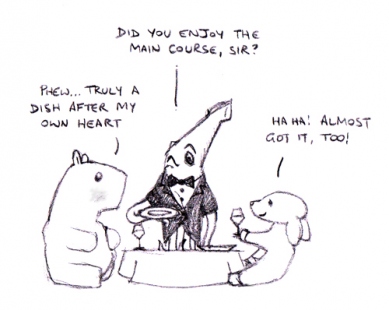For being the fourth city of England, Bristol hasn’t done well for top class restaurants. However it does at last seem to have a gem in its midst, and it’s a home-cultured pearl because before Casamia’s reinvention as a fine dining restaurant under the brothers Sanchez-Iglesias it was their parents’ Italian trattoria for a number of years.
The neighbourhood Italian is still recognisable in the shape of the dining room. The rest of the décor is bright and colourful, deliberately so as they’ve picked up the Japanese practise of redecorating a dining room according to the seasons and we’re here in spring. The menu goes on to include: eggs, rhubarb, asparagus, wild garlic, lamb, mint, micro-salad. We’re definitely here in spring!
One of my favourite bites of the evening was the very first, a little beetroot-purple pastry case containing a light goat-cheese mousse humming with flavour, and an earthy hit of beetroot jam hidden within. This was followed by a breakfast egg: black pudding, toast, tomato ketchup and creamy egg curds all layered cleverly back into a duck egg shell. The next starter was a verdant green, puffed spelt and citrus-marinated shallot in a sauce of pure parsley. Lovely. This was a really strong start and I would have happily reset the clock and eaten these three dishes over and over again all evening.
There was a clever little salad intervention next. A dozen baby veg, and I do mean baby; tiny shoots surely a few days old. Served dressed and with tweezers, the fun was in picking out a piece at a time and trying to guess what he’d grow up to be. Tiny turnips and leeks were startlingly powerful.
Fish was John Dory, scorched and topped with a sweet apple jelly, bathed in a lovely light cider cream. The jelly calmed the otherwise fiercely fishy taste. The main event was the best bit of lamb I’ve eaten in a very long time. I have trouble knowing whether the absolutely magical lamb taste is down more to the quality of the produce or the skill of the chef, but in any case the sweet mint sauce, dark wild garlic puree and soft stewed alliums all simply and beautifully flattered the meat.
Which leaves us to trot our way through four desserts (or rather five, as we paid extra for the GBM apple pie). The first was a sticky button of carrot cake with dehydrated carrot bits and nitrogen-frozen thyme ice cream, so the little dish smoked cheerfully at the table. I found it clever and nicely textured but underwhelming on taste. A dish of orange, crunchy dried mandarin, icy bloody orange nibble and a soft rosemary cream corrected this immediately, very good indeed. The apple pie was the finest dessert. Dry ice poured over cloves gave a nice hum on the nose, but gimmicks aside the lightest possible
pastry case over soft apples and cubes of vanilla ice cream was delicious. Final pud was a beautiful disc of pressed rhubarb topped with vanilla cream, scorched nuggets of meringue and juniper caramel wafer. It looked the part but the rhubarb was so tooth-achingly cold that it didn’t give as much pleasure as it should.The Sanchez-Iglesias brothers offer food that is confident, fun and daring. At the same time, it’s hard to imagine anyone finding anything on the menu too challenging or not liking it. I think that’s pretty brilliant. Their faultless cooking is light too; I left feeling satisfied rather than leaden. Casamia feels like a restaurant just waiting for wider recognition, and £68 before drinks is a bargain for a tasting menu of such quality and imagination (and the wine list is just ridiculously good value). Maybe in a couple of years, when this blog is still not famous but Casamia very much is, I’ll be able to mutter a gruff “ha, told you so”?


